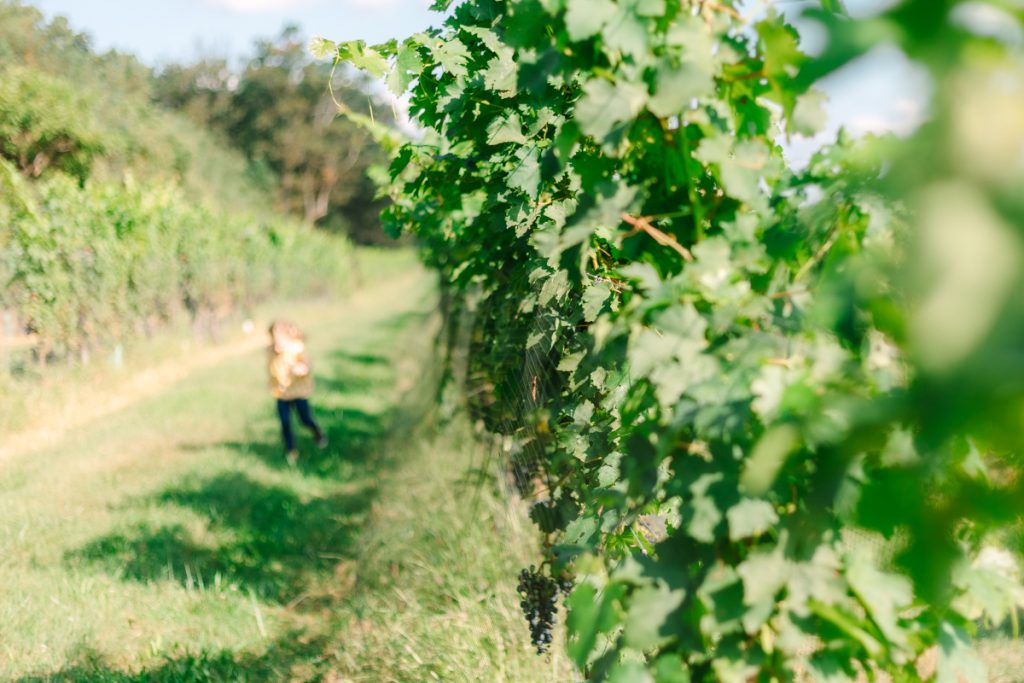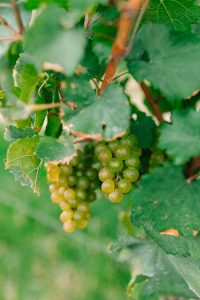
Photo by: Savannah Smith Photography
Most of my conversations with winery owners and winemakers this year have circled around the recognition of decreased sales. If you read the daily Wine Industry Insight headlines, you are probably getting the same picture I am of doom and gloom for the industry.
But the most recent issue of Wine Business Monthly (WBM, August 2024) featured an article titled “BMO Wine Market Report: Understanding the U.S. Wine Market”. This article discusses current statistics related to the American wine market and an explanation of the BMO report that so many writers keep citing for “doom and gloom” purposes. (Their words, not mine.) At the time WBM was released, the article explains how the wine market had been described as relatively “flat” by 2019 going into 2020, but that a lot of this detail and context has been lost due to the pandemic, and the surge of alcohol purchases in 2020 and, perhaps, 2021. I have to give the author credit: he painted a much easier-to-understand picture of the American wine market, zooming out over the past 5 years, and giving a much more (dare I say it?) hopeful future for wine brands across the U.S. – including you.
Before I get into some action items, below, here were some of my key takeaways from the WBM article:
- Industry consolidation was called for prior to 2020, but little movement was made on this front due to the pandemic disruption. Today, we – as an industry – are reconciling with that failure from 5 years ago.
- American wine drinkers do not show as much diversity in drinking habits as is often discussed.
- Wine consumers that partake in ready-to-drink (RTD) beverages (including formula wines or RTD wine cocktails) seldom move up into exploring premium wine selections. (I think this was one of the greatest takeaways from the entire article.)
- It is expected that the aging Boomer wine market is decreasing wine consumption overall due to health concerns or restrictions that occur during aging.
- The bulk grape wine market is in oversupply. This has been one of the hardest hit segments in decreased sales, nationally.
- Direct-to-consumer (DTC) sales still offers the greatest advantages for wine sales, and many wineries across the U.S. excel in this area.
- Wineries are paying little attention to website development (for sales) or investing in third-party sale sites, which could offer opportunities for sales.
- Tasting room and wine club investments are areas many wineries plan to invest in through 2024.
- Overall, many wineries are feeling optimistic about the future of the industry.
I’ve mulled over this article for several weeks now, and here are a few thoughts I’ve put together for wineries as we really dive into the center of harvest season.
Wineries investing in quality
Last month, I spoke quite extensively about wine quality in the “Back to Enology” series I’ve been putting together. From a consultant viewpoint, I have had the pleasure of working with a number of my clients that are taking advantage of this lower-volume year to play around with new operations, new winemaking techniques, or answer some of those winemaking questions they always wanted to know for their operation.
What I gather from this observation is that there are wineries who aren’t afraid to take on the challenge of improving their wines while they have the time.
One of the most limited resources in wineries across the U.S. is availability of time by the winemaker and cellar employees. While the intentional decrease in yield can be a bummer, the upside is utilizing time to serve some of those things the winemakers have always “wanted to get around to.”
As a proponent of quality-forward wines, I really like this take on winemaking. To me, it seems like a good pivot to gain an edge on competition.
If you think you could be in this position of having more time, start small. Now is not the time to take on large operational changes that will burn you out in less than 24 hours. Here’s a few things that I’ve seen winemakers take a focus on this harvest season:
- Integrating a YAN management plan to make nutrient additions during fermentation in relation to real YAN measurements. I have published a free primer on how to do this if you have to mail out samples for YAN analysis.
- Manipulating acid of their wines, especially in those regions that tend to suffer from acid retention.
- Attempting a new wine style from a variety (or varieties) that they are bringing into the cellar this year.
- Reworking their RTD beverage line to improve these offerings. I’ve talked extensively about formula wine development on this platform. I can attest to the fact that a lot of winemakers can do a lot of work to improve these wines from an economic and efficiency perspective.
- Running trials in the cellar. This is something winemakers often refuse to do, but with the extra tank space this vintage, 2024 seems to be the year we test some things out with “control” wines!
- Altering the production process for one or two types of wine that they have been meaning to improve. In this case, the winemaker is looking at operational order and operation decisions to ensure they are going through winemaking processes that deliver wines they are expecting.
- Integrating more seasonal offerings. This is something I see many wineries take advantage of in multiple ways. As the WBM article alluded to, I’m seeing more of a focus on seasonal offerings to tie in with tasting room events and wine club memberships.
How can you become a part of this trend (without hiring a consultant)?

Photo by: Savannah Smith Photography
If you think you want to make some changes in your winery this harvest season and gain an edge on new wine development or better quality, here are some resources within DGW that can assist you. Remember, materials listed below are available to DGW Members and Clients.
YAN Management
- Free Primer (including my solution for how to send out YAN samples) on what YAN is and why it is so important. This is my go-to guide for getting winemakers introduced to YAN and all of you reading this can access it.
- Free YAN Worksheet: This will teach you how to read YAN values and how to add in the N-units when adding nutrients to your fermentation. Also, this is free and all of you reading this can access it.
- YAN, Part 1: What is YAN: Provides a more detailed lesson on what contributes to YAN and why it is important.
- YAN, Part 2: Measuring YAN: Details regarding how to measure YAN at your winery.
- YAN, Part 3: Adjusting YAN During Fermentation: Strategies for altering YAN during primary fermentation.
Wine Styles
If you’re looking to create a new type of wine for your operation, DGW offers several stylistic guides to help wineries make educated decisions for operational order. For some styles of wine (e.g., sparkling, Appassimento), operational order is important.
- Improving Red Wine Concentration through Appassimento: Details regarding Appassimento production.
- Production Guide: Pét-Nats: Key production operations for producing a pét-nat sparkling wine.
- Production Strategies for Rosé Wine Production: Options for rosé wine production.
- It’s All About That Base: Key considerations during primary fermentation when creating a sparkling wine.
Improving Formula/RTD Wine Products
For wines that require TTB Formula Approval, DGW has several resources to explain ingredients, their technical meanings, and how to make better wines of this style.
- Formulating Untraditional Wines and Wine Products: An in-depth article explaining key ingredients in formula wines and RTD cocktails.
- Pre-Bottling Operations for Formula Wines: In depth operational order for producing a formula wine or RTD cocktail after primary fermentation is complete.
A Final Note on Grower Relationships

There’s no kind way of highlighting the fact that this could be a very difficult year for many of our wine grape grower colleagues. For many regions, losing local or regional growers could have a negative effect on long-term development for regional terroir.
If you can, help your growers.
Check in with local distilleries to see if they could use the fruit for base-wines that can get distilled into fruit spirits. It’s possible you may even need them to produce brandy for fortified wines and/or RTD cocktails.
Allocate home winemaking or amateur winemaking outlets for them to sell to. (If anyone reading this has room to take fruit for this purpose, please let me know at info@dgwinemaking.com. At the very least, I can collect some resources for growers.)
It’s rather late in the season, but sometimes the fruit can get sold to Food Science or Enology (college) departments for students to learn fermentation.
Keep the relationship healthy and prosperous for both groups. This downfall in wine sales is likely to turn around, but it may take some time.
The Full BMO Report
(If interested, you can read the newest release of the full 2024 BMO report at: https://commercial.bmo.com/en/us/industry-expertise/wine-spirits/)
